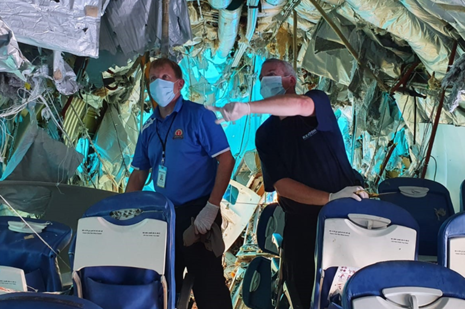
In 2020, a COVID repatriation flight made a long landing in Monsoon conditions which resulted in overshooting the tabletop runway, coming to rest down the embankment. Of the 190 onboard (184 passengers, 6 crew), the death toll tragically came to 21.
Kenyon was called upon to provide support with Personal Effects recovery and quickly mobilized a team to support the operation.
Challenges
Logistically, this incident presented many challenges.
Solutions
Working through the night, the response team that was deployed to the incident, possessed a range of skills, including disaster site search and recovery, forensics, and PE recovery and processing. Following negotiations with the destination country’s High Commission in London, UK, special dispensation was given to Kenyon personnel to enter the country quarantine free. Also, visas were issued and collected the same day. At the same time, as the team deployed to the destination, the equipment to support the operation was deployed from Kenyon’s UK Warehouse.
The incident site was confined to the end of the runway, where the aircraft had broken into three parts. Though this made recovery slightly easier, the site was still dogged with the same hazards usually associated with an incident scene. A site survey and risk assessment were completed to ensure safe search and recovery.
The team recovered personal effects from the aircraft wreckage, as well as those strewn across the site. Within the Personal Effects processing area in an airside building, stations were set up so that items could be inventoried, photographed, and cleaned. All information associated with each item was logged and managed within a central database. Fortunately, most of the baggage had maintained its integrity, and in some cases, check-in stickers were still attached, allowing for items to be quickly returned.
The client’s requirements varied over the course of the deployment. Political and community pressures dictated the speed of recovery and the prompt return of items to customers. Identification documentation stored in luggage needed to be retrieved and expeditiously returned to passengers and relatives, to facilitate interim compensation payments from the airline.
Throughout the response, close and regular dialogue was undertaken with the airline’s senior management and Board team.
In total, 21 Team Members were deployed on-site, supported by Kenyon’s UK Crisis Management Centre. Despite the demanding conditions, all returned home safely and avoiding infections.
This incident demonstrates Kenyon’s capability to respond under the most difficult of circumstances and adversities.
Kenyon Operations Team